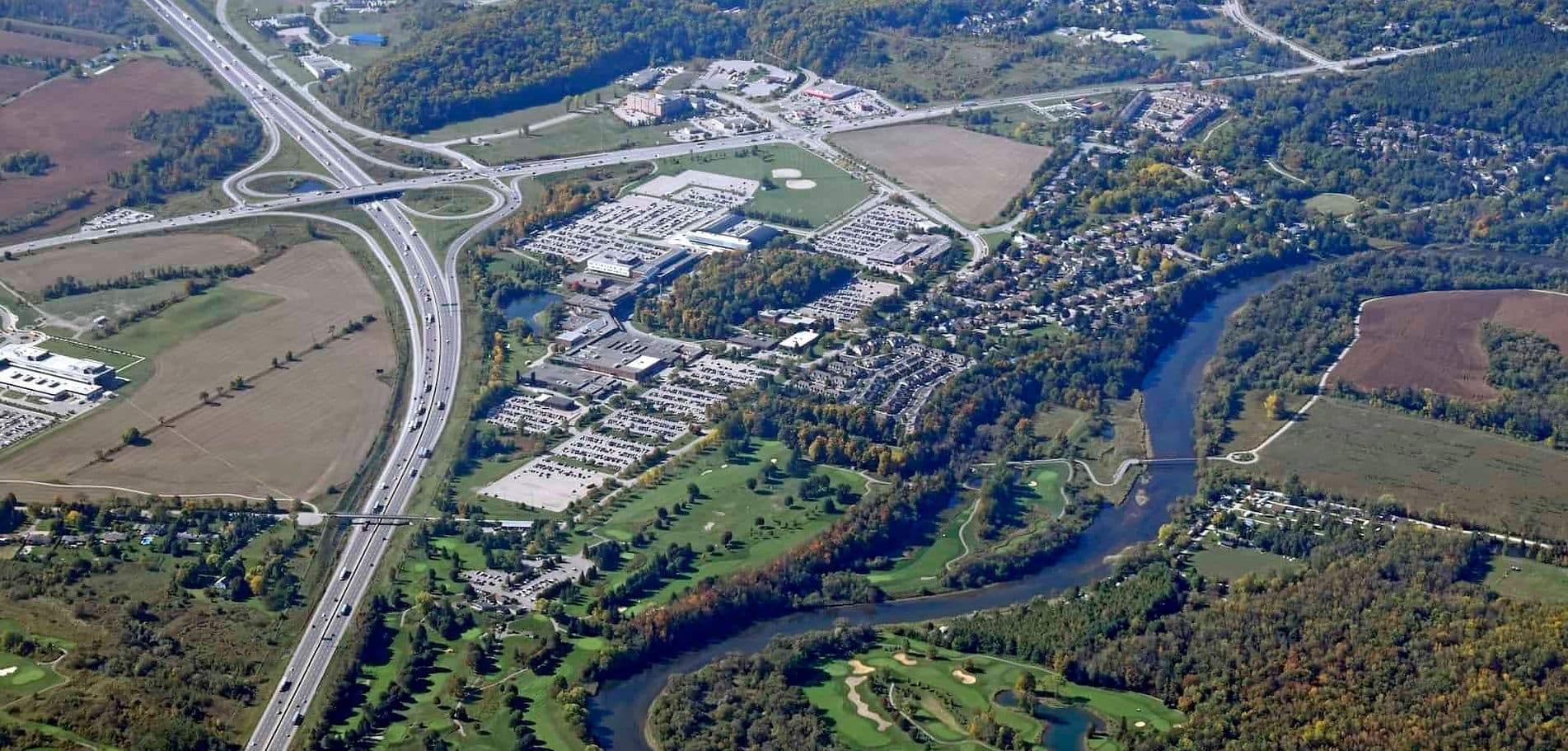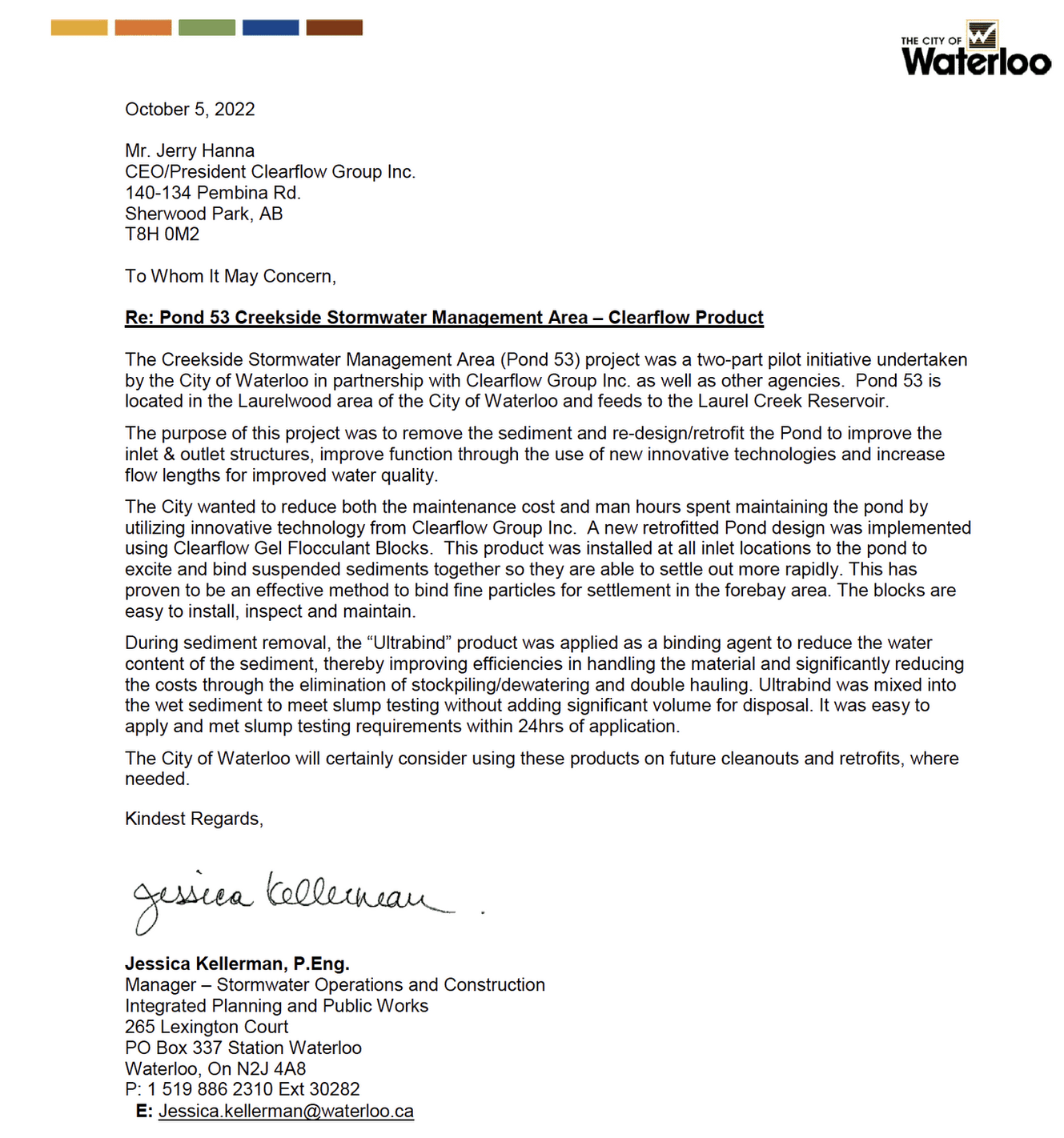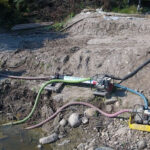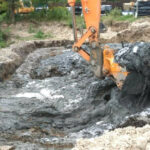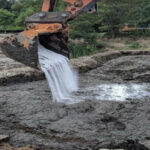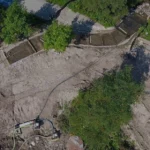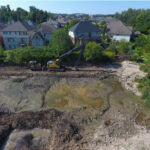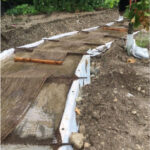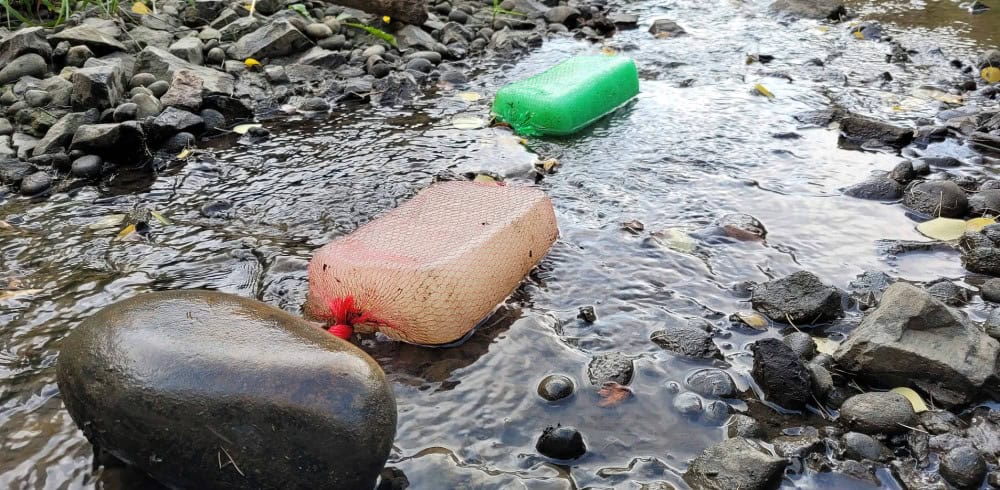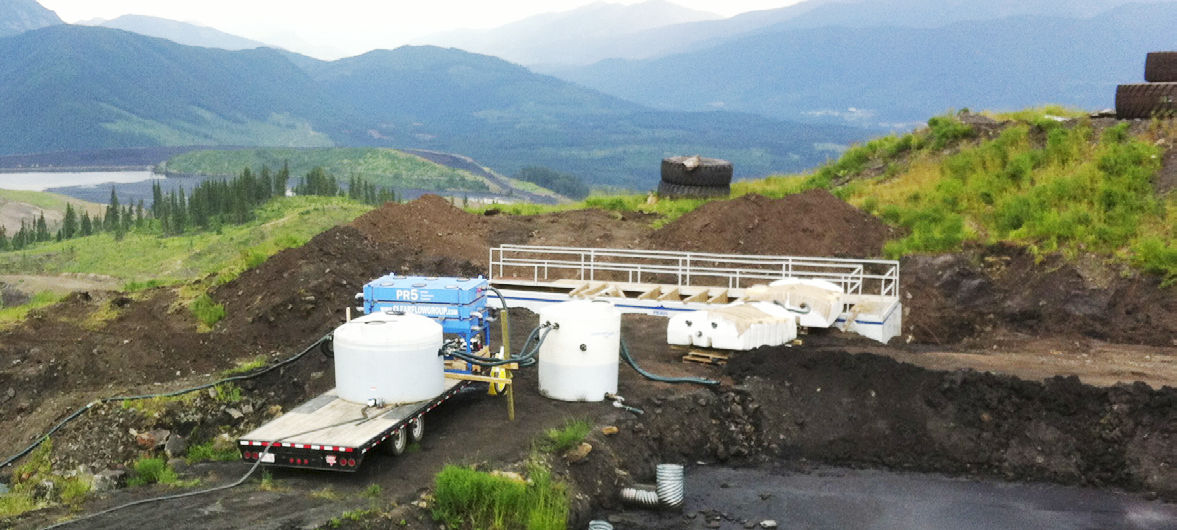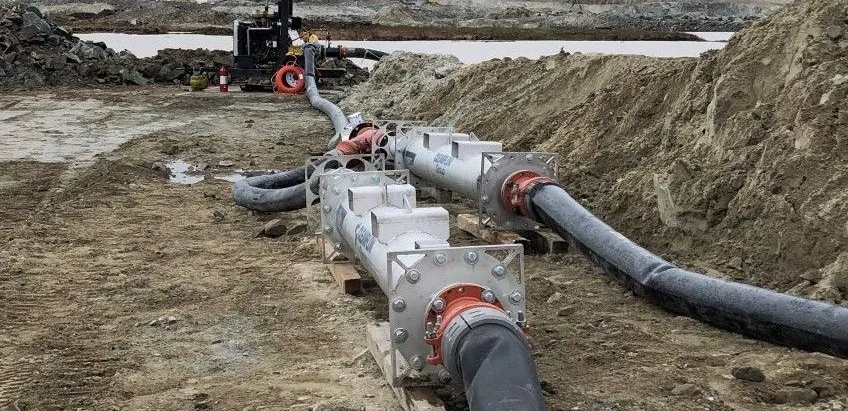The municipal client was searching for an innovative method to safely dewater and transport sediment sludge from a stormwater management facility SMWF (storm pond approx. 3,000 m3).
Location: Storm Pond 53, Waterloo, Ontario, Canada
Client Needs:
Managing stormwater is an important part of all urban development planning. By directing rainfall and snow melt waters, urban planners try to mitigate flooding through the temporary slowing and storage of water in a Stormwater Management Facility (SWMF). These types of facilities are designed to not only create holding capacity but also provide limited water treatment through the gravity settling of large particulate matter. Some nutrient removal by plants growing in or near the riparian zone is also used. Because settling is used for treatment; they will eventually become full and require maintenance to remove accumulated material. The more material in the SWMF, the less effective settling becomes as water maintains its flow energy and moves more directly through the pond in a process called short circuiting. A SWMF is normally the last purpose-built structure before stormwater enters the environment, having a properly maintained pond will prevent pollutants from damaging downstream aquatic habitats. The City of Waterloo’s Pond 53 was at capacity and needed to have the sediment removed. Greenland Engineering looked to Clearflow Group to provide an environmentally responsible solution.
Dewatering Solution for Stormwater Management Facilities
Removing sediment slurry first required water in the pond to be pumped off. Water can be released if it is of satisfactory quality; however, when the water is polluted with suspended solids, it must be treated before being released to the environment. Clearflow Group provided a Gel Flocculant Reactor and Gel Floc to economically accomplish this treatment. Water was sent through the reactor to increase the size and settleability of the solids contained in the flow, then into a constructed ditch lined with treated Geojute to capture the solids. Gel Floc’s safety in aquatic ecosystems was a major factor in its approval for use, along with its simplicity and the flocculants efficacy. This provided risk mitigation and cost savings for the project dewatering.
Slurry Solidification
Restoring the availability of the SWMF’s space for water storage requires the removal of the sediment slurry or mud. Transportation of slurries is difficult as they have no structural strength. Absorptive items like peat or sawdust are often used to thicken or dry the wet material prior to excavation. This process adds mass and volume, which in turn adds costs at landfill disposal. Clearflow Group’s Ultrabind adds very little to the mud while thickening it. Typically, 1 m3 of slurry only requires 1 KG of Ultrabind to achieve solidification.
Reuse of Sediment at Stormwater Management Facility
The Ultrabind product improved the quality of the Pond 53 slurry by turning it into a sludge. Compost was then added making an amended soil and after it was approved for use, 300M3 of the sediment was applied to municipal boulevards saving 10000’s of dollars in tipping fees at the local landfill. Additionally, 30% greater grass and tree growth was recorded thus turning the diverted material into a value-added product instead of a net liability.
See Links Below For More Information
City of Waterloo Stormwater Management Facility – Project Profile and Client Recommendation.
SWS 2020 Top Projects (Video) – Municipal Stormwater Management Facility Sediment Removal.

